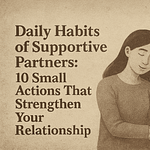How to Talk to Your Boyfriend When You Are Mad: A Complete Communication Guide
Why Healthy Communication During Conflict Matters
Learning how to express anger constructively can transform your relationship from reactive conflicts to deeper understanding. When you’re mad at your boyfriend, how you communicate can either strengthen your bond or create lasting damage.
1The Cool-Down Phase (First 30 Minutes)
Recognize Your Emotional State
When you first feel anger rising, your brain’s emotional center (amygdala) takes control, making rational communication nearly impossible. Before approaching your boyfriend, acknowledge that you’re in an emotional state that could lead to saying things you’ll regret.
Take a Strategic Break
Tell your boyfriend: “I’m feeling really upset right now and need some time to process this before we talk. Can we discuss this in [specific timeframe]?” This prevents the conversation from happening when emotions are too raw to be productive.
Process Your Feelings
Use this time to identify what specifically made you angry. Write down the specific behavior or incident that triggered you, not just general character assessments. This will help you communicate more clearly later.
Try the “24-hour rule” for major conflicts. If you’re still upset after a full day, the issue probably needs addressing. If not, it may have been a temporary emotional reaction.
2The Preparation Phase (Planning Your Approach)
Choose the Right Time and Place
Don’t ambush your boyfriend when he’s stressed, tired, or distracted. Ask when he has 20-30 minutes to talk about something important. Choose a private, comfortable space where you won’t be interrupted.
Use “I” Statements Instead of “You” Accusations
Transform blame into personal experience sharing. Instead of “You never listen to me,” try “I felt unheard when I was sharing about my day and you kept looking at your phone.” This approach reduces defensiveness and opens dialogue.
Focus on Specific Behaviors, Not Character
Address what someone did, not who they are. “When you interrupted me three times during dinner” is specific and actionable. “You’re so rude” is a character attack that leads to defensiveness.
Pre-Conversation Checklist
- Have I calmed down enough to speak rationally?
- Can I explain what specifically upset me?
- Do I have a proposed solution or just want to vent?
- Am I prepared to listen to his perspective?
- Is this the right time and place for this conversation?
3The Conversation Phase (Healthy Communication in Action)
Start with Connection, Not Conflict
Begin by affirming your relationship: “I love you and want us to work through this together.” This sets a collaborative tone rather than an adversarial one. It reminds both of you that you’re on the same team.
Express Your Feelings Without Attacking
Use the formula: “When [specific situation] happened, I felt [emotion] because [impact on you].” For example: “When you made plans with your friends without checking with me first, I felt excluded because we had talked about spending Sunday together.”
Listen Actively to His Response
Give him space to explain his perspective without interrupting. Summarize what you heard to ensure understanding: “So you’re saying you thought I was okay with you making those plans because I didn’t respond when you mentioned it?” This shows you’re truly listening.
Essential Communication Scripts That Work
 When You Need Space
When You Need Space
“I’m feeling overwhelmed right now and need some time to organize my thoughts. Can we revisit this conversation tomorrow evening? This is important to me, and I want to discuss it when I can be my best self.”
When You Feel Unheard
“I don’t feel like we’re connecting on this issue. Can you help me understand your perspective? I want to make sure I’m hearing you correctly, and I’d like you to understand where I’m coming from too.”
When You Want to Find Solutions
“Now that we both understand the problem, what can we do differently next time? I’m open to hearing your ideas, and I have some thoughts on how we might handle this better in the future.”
4The Resolution Phase (Moving Forward Together)
Work Together on Solutions
Ask “What can we both do differently next time?” rather than focusing on who was wrong. Create specific, actionable agreements. If the issue was about communication, agree on check-in times or ways to signal when you need to talk.
Acknowledge Progress and Effort
Thank your boyfriend for being willing to have this difficult conversation. Acknowledge any valid points he made or ways he showed understanding. This reinforces positive communication patterns for future conflicts.
Plan Follow-Up
For significant issues, schedule a check-in: “Let’s see how our new approach is working in a week.” This shows commitment to ongoing improvement and prevents issues from being swept under the rug.
Common Communication Pitfalls to Avoid
- Bringing Up Past Issues: Stick to the current problem. Saying “and another thing…” turns one conflict into a relationship-ending battle.
- Using Absolute Words: “Never” and “always” make people defensive. “You never listen” is rarely true and will derail the conversation.
- Talking When Too Emotional: If you’re crying, yelling, or shaking, postpone the conversation. High emotions block rational problem-solving.
- Making Threats: “If you don’t change, I’m leaving” during a normal argument creates unnecessary drama and doesn’t solve the actual problem.
- Expecting Immediate Change: Real behavioral changes take time. Don’t expect perfection after one conversation.
If your boyfriend shuts down during difficult conversations, try saying: “I notice you’ve gotten quiet. What’s going through your mind right now?” This often helps re-engage withdrawn partners without pressure.
Transform Your Relationship Through Better Communication

Remember that healthy relationships require both partners to communicate openly and work together on solutions. Every conflict is an opportunity to understand each other better and grow stronger as a couple.
Start applying these communication strategies today, and watch how quickly your relationship dynamics improve. Your future self—and your relationship—will thank you.
 When You Need Space
When You Need Space


